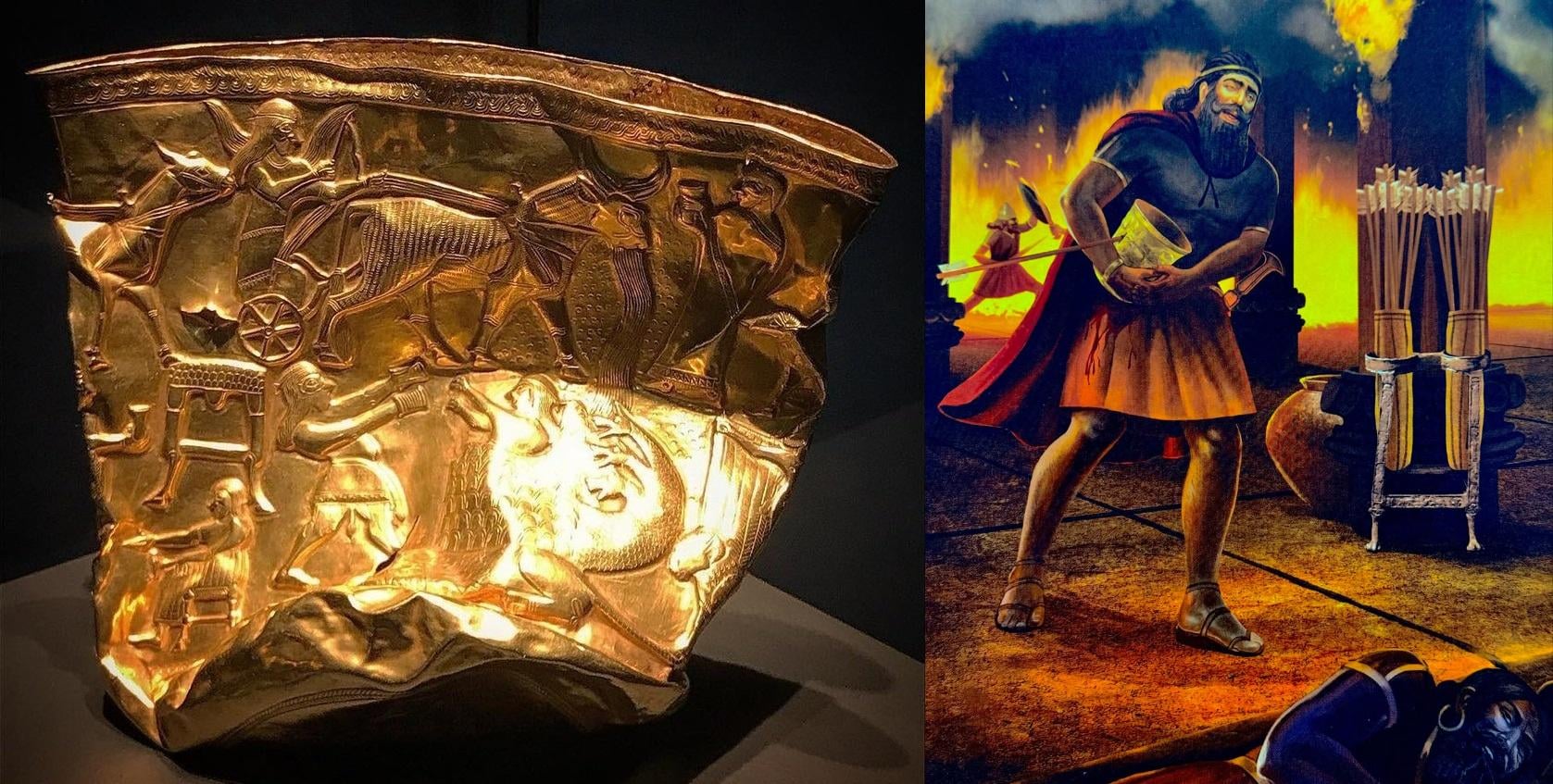
During an invasion of Naghadeh around 1200 BC, one of the soldiers grabbed a golden bowl from the treasury and tried to escape with it. He fell and died clutching it, bending the bowl under his weight. Discovered beneath his skeleton in 1958, it’s now housed at National Museum of Iran. [1677×847]
by Party_Judgment5780

1 Comment
The soldier knew that time was running short. The citadel of Hasanlu was under violent siege. He descended into the treasury and grabbed a handful of valuable treasures, including a treasured golden bowl, in hope of selling it and start a new life. But as the warriors began climbing up a wooden staircase inside the home, the whole building collapsed, he fell and died clutching it, bending the bowl under his weight, and it remained under his body for 3,000 years. The discovery of the soldier and their treasures, in particular the spectacular golden bowl, was hailed as one of the greatest finds of the decade. Images of the crumpled bowl were splashed across newspapers around the world, and scholars began publishing their interpretations of the images etched onto this magnificent artifact.
The bowl and soldier’s skeleton were discovered in 1958 at the Hasanlu Hill, near Naghadeh, northwest Iran. The reliefs show a complicated scheme with many figures, including several gods, various animals, sacrificing, and combat. It is mostly divided into two registers, with the gods, riding chariots and with winged heads, at the top. Three gods are engraved: The god of the earth, The god of water and The god of the sun. The image of a warrior fighting a monster, a goddess standing on two rams, a human body on the back of a bird, and a nymph are some of the images on this bowl. Many characters are engraved on this famous bowl, which probably tells an epic story. The bowl was showed to the public for the first time in 1998, and it is permanently on display at the National Museum of Iran.
Full reliefs:
[https://iran-atlas.info/regional%20prehistoric/hasanlu/images/jam.jpg](https://iran-atlas.info/regional%20prehistoric/hasanlu/images/jam.jpg)
Also, to mark the 60th anniversary of the artifact’s discovery, a memorial was erected near the discovery site in 2019:
[https://www.irna.ir/news/83437013/%D8%AA%D9%86%D8%AF%DB%8C%D8%B3-%D8%AC%D8%A7%D9%85-%D8%B2%D8%B1%DB%8C%D9%86-%D8%AD%D8%B3%D9%86%D9%84%D9%88-%D8%AF%D8%B1-%D9%86%D9%82%D8%AF%D9%87-%D8%B1%D9%88%D9%86%D9%85%D8%A7%DB%8C%DB%8C-%D8%B4%D8%AF#gallery](https://www.irna.ir/news/83437013/%D8%AA%D9%86%D8%AF%DB%8C%D8%B3-%D8%AC%D8%A7%D9%85-%D8%B2%D8%B1%DB%8C%D9%86-%D8%AD%D8%B3%D9%86%D9%84%D9%88-%D8%AF%D8%B1-%D9%86%D9%82%D8%AF%D9%87-%D8%B1%D9%88%D9%86%D9%85%D8%A7%DB%8C%DB%8C-%D8%B4%D8%AF#gallery)